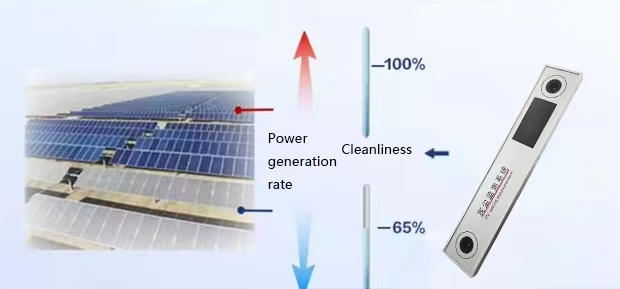Hekk kif is-suq globali tal-enerġija solari jkompli jespandi, iż-żamma ta' effiċjenza ottimali tal-pannelli hija kruċjali. L-akkumulazzjoni tat-trab fuq il-pannelli fotovoltajċi (PV) tista' tnaqqas il-produzzjoni tal-enerġija sa25%, partikolarment f'reġjuni aridi u industrijali27. Biex tindirizza din l-isfida,sensuri tal-monitoraġġ tat-trab tal-pannelli solariħarġu bħala għodod essenzjali għall-iskoperta ta' partikuli f'ħin reali u l-ottimizzazzjoni tal-manutenzjoni.
Karatteristiċi Ewlenin tas-Sensuri tal-Monitoraġġ tat-Trab
Sensuri moderni tat-trab jisfruttaw teknoloġiji avvanzati biex jiżguraw prestazzjoni preċiża u affidabbli:
- Sejbien ta' Preċiżjoni GħoljaBl-użu ta' sensing ottiku, infra-aħmar, jew ibbażat fuq il-lejżer biex titkejjel id-densità tat-trab b'interferenza minima1.
- Trażmissjoni ta' Dejta f'Ħin RealiJappoġġjaRS485, GPRS, 4G, Wi-Fi, LoRa, u LoRaWANgħal integrazzjoni bla xkiel mas-sistemi ta' monitoraġġ solari39.
- Disinn Reżistenti għat-TempMagħmul għal ambjenti ħorox, inklużi deżerti u żoni industrijali, fejn l-akkumulazzjoni tat-trab hija l-aktar severa1.
- Integrazzjoni tal-IoT u l-AIJippermetti manutenzjoni predittiva billi janalizza x-xejriet tat-trab u jiskeda tindif awtomatizzat meta l-effiċjenza tonqos57.
Applikazzjonijiet fl-Industriji Kollha
- Irziezet Solari fuq Skala ta' Utilità
- Il-monitoraġġ awtomatizzat tat-trab jgħin installazzjonijiet kbar f'reġjuni bħall-Lvant Nofsani u ċ-Ċina jimminimizzaw it-telf tal-enerġija, u b'hekk itejjeb l-ROI sa30%7.
- Sistemi Solari Kummerċjali u Residenzjali
- Sensuri intelliġenti mqabbla ma' apps mobbli javżaw lill-utenti dwar tnaqqis fil-prestazzjoni, u b'hekk jippermettu tindif f'waqtu5.
- Faċilitajiet Industrijali
- Fabbriki b'matriċi solari fuq il-post jużaw sensuri tat-trab biex jikkonformaw mar-regolamenti ambjentali u jżommu l-ogħla effiċjenza1.
Soluzzjonijiet Personalizzati għall-Ottimizzazzjoni tal-Enerġija Solari
"Nistgħu nipprovdu wkoll varjetà ta' soluzzjonijiet għal sett komplut ta' servers u moduli mingħajr fili tas-softwer, li jappoġġjaw konnettività RS485, GPRS, 4G, Wi-Fi, LoRa, u LoRaWAN."
Għal aktar informazzjoni dwar is-sensuri, jekk jogħġbok ikkuntattja:
Honde Technology Co., Ltd.
Ħin tal-posta: 18 ta' April 2025


